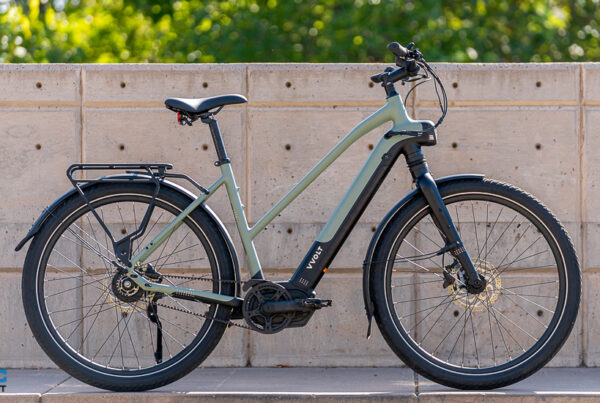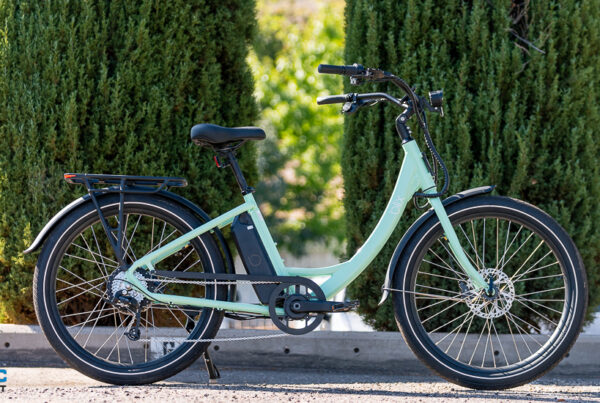E-Bike Batteries Explained
Batteries are one of the core elements of electric bikes. They are needed to supply power to the motor, which in turn provides assistance to the rider, and reduces the amount of human effort needed to move the bike.
E-bike batteries come in various sizes, and can be mounted to the frame in different ways. Some are fully internal, and are sealed inside the bike’s frame. As such, they are not removable, except by using special methods and tools available to professional technicians. Others are removable for easier charging and replacement, whether mounted completely externally (outside the frame), partially recessed (sunken into the frame to some degree), or completely recessed (sunken entirely and nearly invisible on the bike).
Regardless of their type, all e-bike batteries are actually battery packs, and are made up of groups of cellssimilar to the standard AA or AAA batteries used in everyday applications. The number of cells and the method used to cluster them together determines how quickly they can provide power and how long they can continue to supply it.
In contrast to standard AA or AAA batteries, however, those used in e-bikes are most commonly rechargeable lithium-ion batteries similar to those used inside smartphones and in conjunction with cordless power tools. Lithium-ion batteries are efficient and can be recharged hundreds or even thousands of times if cared for properly. The Light Electric Vehicle Association, or LEVA, has a great article that they allowed us to re-publish regarding proper battery care and safety to ensure maximum life span.
Fully integrated batteries such as the one on the Velotric Nomad 1 can match the bike’s color and disappear into the frame.
Electric Bike Battery Terms and Definitions
Before we dive deeper into the details, let’s consider a couple of examples of e-bike battery specifications in relation to how they usually appear:
V = Volts and Ah = Amp-hours
V = Volts and Wh = Watt-hours
Both examples convey two basic measurements, albeit a little differently. In both examples, we see volts first; this measurement relates to the availability of the electrical energy the battery can deliver. Next, either amp-hours or watt-hours are shown; these represent a battery’s capacity, or the amount of power it can store.
Let’s define these words (and a few helpful additional terms) a bit more clearly:
Current: the flow of electricity, or transfer of electrons, through a circuit.
Circuit: a closed system of wires and electrical components through which current can travel.
Volts (V): the amount of electrical force or pressure the battery can produce; the speed of the battery’s output of current. This is also sometimes referred to as the electromotive force, and is more specifically the speed at which electrons move through the system.
Note that this is a nominal rating that is used for classification purposes. In reality, a battery’s voltage varies based on the amount of power being drawn from it at a given moment, as well as the battery’s present level of charge. As current is drawn from the battery, its voltage decreases. This can be seen in an e-bike battery voltage chart.
Voltage is determined by the number of battery cells arranged “in series”.
Amps or amperes (A): a measurement of the strength of the battery’s output, or current. More specifically, the volume of electrons passing through the system. This is limited by the size of the wires making up the system. Larger wires allow more current, smaller wires allow less. Generally, systems with higher voltage should use smaller wires (that limit amperage) to prevent overheating.
Amps can also be thought of as the amount of energy being drawn from the battery by what it is powering, and can fluctuate from moment to moment. In the case of e-bike batteries and their motors, a greater number of amps are drawn as the motor works harder (i.e. going uphill or using only the throttle).
Amp-hours (Ah): a measurement of charge; the amount of energy that can be delivered through an electrical system over the course of an hour.
In the case of a 10 Ah battery, it can deliver 10 amps of power in one hour, or 1 amp of power for 10 hours, etc, depending on the needs of the component that is delivering power to.
Amp-hours are determined by the number of clusters of battery cells arranged “in parallel”.
Watts (W): a unit of power, determined by volts and amps; the amount of work that can be done by one amp of current delivered at 1 volt. The amount of work is determined by the rate at which the energy is used.
This measurement is generally applied only to an e-bike’s motor, but its battery must support the motor’s needs.
Watt-hours (Wh): another measurement of capacity. In this case, the amount of work that can be done, or the amount of power that is spent, over the course of an hour. This is a direct result of a battery’s voltage multiplied by its amp-hours.
As such, a 24V, 20 Ah battery and a 48V, 10 Ah battery might look different on paper, but they have about the same amount of energy. This makes watt-hours a more reliable indicator of capacity when comparing different batteries.
Controller: A device that limits the flow of electricity through a circuit, and prevents a battery from discharging its energy all at once. In terms of an electric bike, this is the “brain” that adjusts the pedal assist system, the amount of input the motor contributes, and the e-bike’s speed.
Source link








